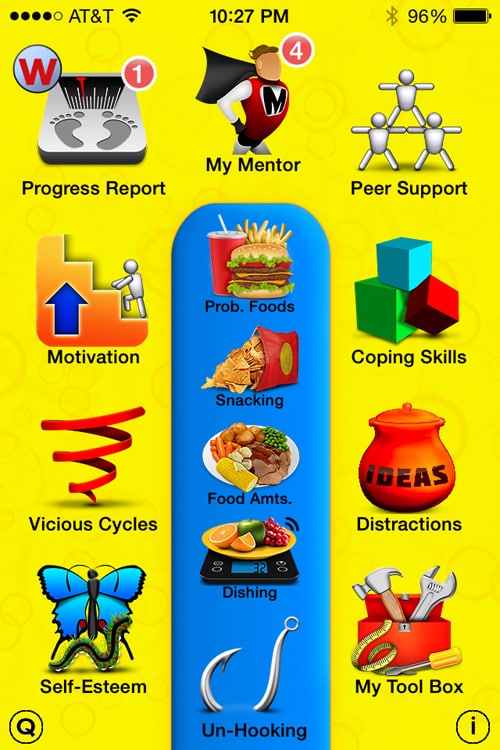Publication by the Huffington Post is a pretty big deal, so we are pleased to find Dr. Pretlow’s byline there. This piece, titled “Eating Addiction: There’s an App for That,” presents the complete rundown on the W8Loss2Go smartphone application. Boiled down to the essentials, the app has two aims: enable overweight kids to unhook themselves from problem foods, and make sure they have the coping skills to stay unhooked.
Dr. Pretlow touched on many things in his piece, including the fact that the worst thing about a “fat camp” is that the person eventually has to go home. Once released into the “real world,” many graduates of such programs find themselves backsliding. Sometimes they regain all the weight they worked so hard to lose. The most exciting aspect of W8Loss2Go is that it provides most of the benefits of a residential program at a tiny fraction of the cost.
Dr. Pretlow also reviewed the failure rate of bariatric surgery; for those patients the “real world” also takes its toll. But the great news for patients who opt for surgery is that they can dramatically increase their odds of long-term success by making W8Loss2Go a part of their post-op lives. The surgery might kick-start weight loss, but the smartphone app can guarantee that weight-loss efforts don’t run out of gas in the following months and years.
The History of W8Loss2Go
Dr. Pretlow first told the profession and the public about his promising W8Loss2Go concept at the 2011 National Conference of the American Academy of Pediatrics. It’s all about self-empowerment and realizing that the behaviors of pathological overeaters and those of hard-drug addicts are much more similar than coincidence could account for.
In the same year, Childhood Obesity News published “W8 Loss 2 Go iPhone App Fills Important Role,” discussing what Dr. Pretlow has learned about problem foods and what needs to be done about them. Several months later, we published the call to action for testers, describing W8Loss2Go as a self-directed overweight intervention whose goal is to help users identify behavior, social cues, and emotional states that lead to unhealthy food cravings and binge eating
In 2013 came “In the Media: W8Loss2Go,” announcing the participation of several highly-respected institutions and professional colleagues in an Australian trial. “W8Loss2Go Study in Adelaide, Australia” introduced the members of the study team, and “A Milestone for W8Loss2Go” talked about Ellen Burne, the cover girl who underwent lap band surgery. She feels that if the app had been available to her, her weight loss journey would have been easier.
Other posts discussed the pros and cons of the buddy system and the techniques of portion control. “Following Along with W8Loss2Go” talked more about the history and early development stages of the app, and some of the various groups that Dr. Pretlow addressed about it.
“Childhood Obesity Study Brings Surprises” discussed the perils of self-reporting as a study tool. “The Mystery of Resistance” and “Happiness and Heaviness” covered some other psychological obstacles. “W8Loss2Go Helps in Stages” talked about withdrawal from “problem foods,” the snack reduction method, and the best technique for weighing food portions.
In a subsequent post, we also discussed the subtle difference between food addiction and the more accurate “eating addiction,” and the perhaps even more appropriate “overeating addiction.” We also looked at a similar app and compared the involvement level of parents that it asks, with the parental involvement level of W8Loss2Go. Another ever-popular topic is the all-important role of motivation—but that would bring us to a whole different list of posts.
Your responses and feedback are welcome!
Image by W8Loss2Go


 FAQs and Media Requests:
FAQs and Media Requests: 











